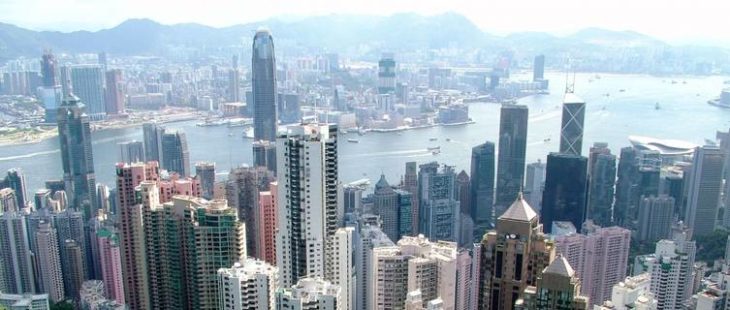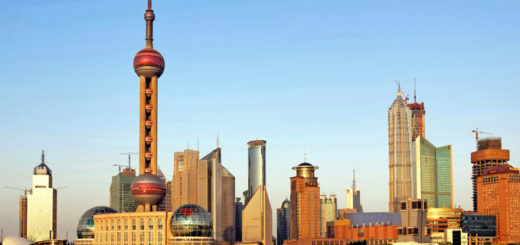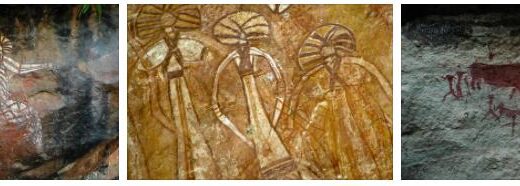Hong Kong Travel Guide
Hong Kong City Overview
Hong Kong, the city of skyscrapers and a former enclave of the British Empire, developed rapidly after being handed over to Chinese sovereignty in 1997. Hong Kong is now one of the most expensive cities in the world.
You could also say that the city at the mouth of the Pearl River Delta on the southwest coast of China presents itself today without the mask of the Empire and has become much more Chinese: just under 96% of the over 7 million inhabitants are Chinese. In addition, the so-called gateway to China is administered by a predominantly Cantonese government. However, on certain issues, such as the persecution of Falun Gong, certain freedoms and freedom of expression have been preserved in Hong Kong.
While the political reasons for the creation of Hong Kong are now a thing of the past, the geographical peculiarity of the city comes to the fore. The few square kilometers that the British are granted today are at the top of the UN list of urban population densities. The center of the former empire is Hong Kong Island. Kowloon, on the other side of the harbor, forms the other half of the metropolitan area. The New Territories are somewhat north. This formerly rural hinterland has now been almost completely taken over by the constantly growing and bursting at the seams of Hong Kong. In front of this core area are the large islands of Lamma and Lantau and the many smaller, surrounding islands that complete the mosaic.
Hong Kong also has natural beauty – distant mountains, small hidden islands, long white beaches and island landscapes that few locals seem to be aware of, but which visitors are pleasantly surprised by.
The longest cable car in Asia, the Ngong Ping 360 (Internet: www.np360.com.hk), connects the island of Hong Kong with the island of Lantau . During the almost half-hour cable car ride, the gondola offers a constantly changing panorama of the South China Sea, Hong Kong International Airport , the mountainous terrain of Lantau Island and the Tian Tan Buddha statue . The bronze giant Buddha watches over the picturesque Po Lin monastery . Pleasure addicts meet at Hong Kong Disneyland , which is also on Lantau.
Important facts
Area code: +852
Population: 7,547,652 (2020)
Latitude: 22.247860
Longitude: 114.203384
Weather in Hong Kong
In winter and at the beginning of spring, the weather can be mild and fresh, but in May the air humidity rises. Summer is hot and there is a lot of rainfall. Typhoons occur in summer and early autumn, and there are periodic heavy downpours, so Hong Kong is not an ideal summer destination.
City History of Hong Kong
The Chinese city of Hong Kong was placed under British administration as a result of the opium wars in the 19th century. When peace conditions were drawn up after the first opium war, the Nanking Treaty in 1842 stipulated that China would cede the island of Hong Kong to Britain. The whole area, which we now know as Hong Kong, also went to the British in 1898 for a contractual 99 years. Until the return in 1997, the colony was completely under British administration, except for about four years during World War II, when Hong Kong was occupied by the Japanese.
Hong Kong returned to China as a ‘Special Administrative Region’ , where it is now governed by the unique “one country, two systems” principle introduced by the then Chinese prime minister, Deng Xiaoping. This principle enables Hong Kong to enjoy a high degree of autonomy, an independent judiciary, the rule of law, free trade and freedom of expression. The legendary Victoria Harbor was the key to the development of the area as a trading port and border crossing point to China.
Much has changed since 1841, when the then British Foreign Secretary, Lord Palmerston, described Hong Kong as ‘nothing but a barren island without a house on it’ . From a collection of small fishing villages, Hong Kong has turned into one of the most remarkable cities on earth, while maintaining the beauty of the natural environment.
Within a few months of the handover to China in July 1997, the entire region’s financial crisis also hit Hong Kong. Today the economy of this Asian financial center is in very good shape and has been enjoying remarkable growth rates for years. When it comes to Cantonese idioms and values, money is paramount, and there is plenty of it in Hong Kong. Hong Kong is a dedicated place to do business, and the dedication to quick money has never been greater.
Between the skyscrapers there are not only some well-tended parks, but also cultural monuments that reflect more than 5000 years of Chinese history and 150 years of British colonial heritage. Their architecture forms a wonderful contrast to the modern buildings. The cultural monuments on Hong Kong Island include the Tin Hau Temple, the old Wan Chai Post Office, Flagstaff House and St. John’s Cathedral, in Kowloon among others the tomb of Lei Cheng Uk Han, remains of the south gate of Kowloon City and the Hong Kong Observatory as well in the New Territories including the Sam Tung Uk Village and the Man Mo Temple. Colonial monuments include the statue of Queen Victoria in Victoria Park and the Murray building in Stanley. Modern counterparts shape the famous skyline, such as the Bank of China building, the HSBC Tower and the International Finance Center (IFC).
The unique fusion of east and west, traditional and contemporary makes Hong Kong one of the most interesting travel destinations in Asia.



